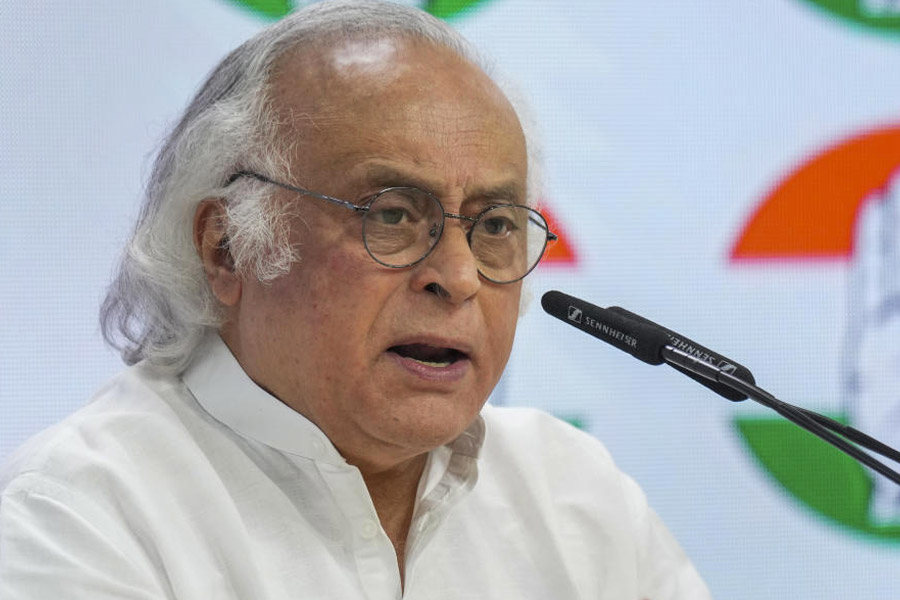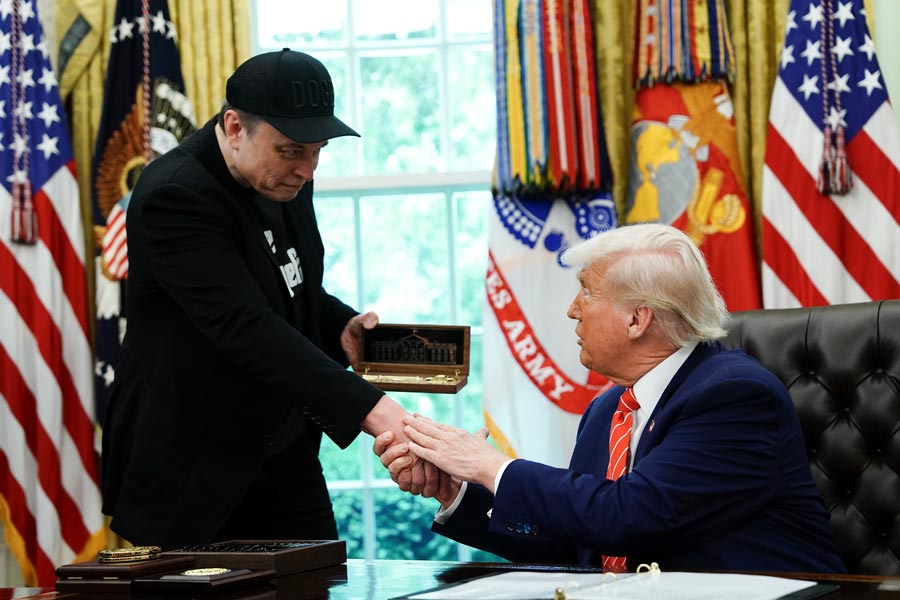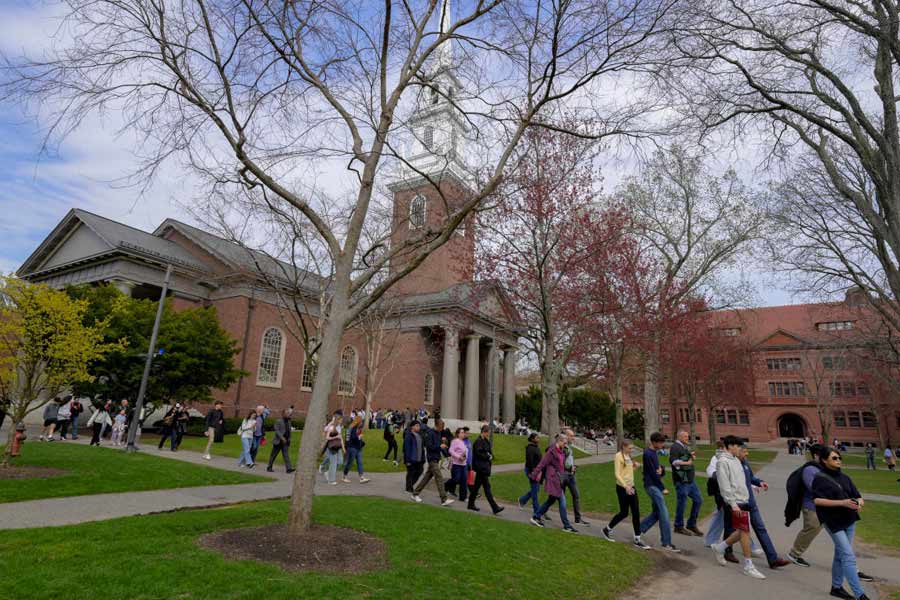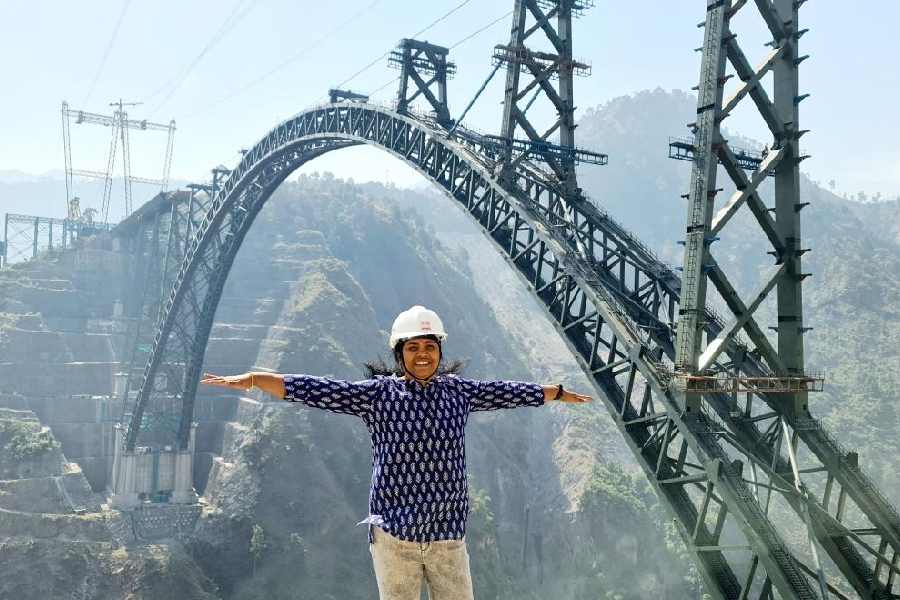 |
 |
| A young girl before and after (top) surgery |
Picture this: An ape-like face, overbite or other facial oddities. This could be a nightmare for any young girl, or boy, for that matter. Ananya Guha (name changed), a first-year student of a dental college in Calcutta, had to put up with all the curious glances and ridicule that her features evoked — until she underwent total orofacial reconstruction at the Salt Lake Dental Federation and Research Centre (SLDFR), Calcutta.
“It was a difficult case,” says Dr Anirban Sengupta, director, SLDFR. “The first time I met Ananya, she lacked confidence. But post surgery, she seems to be a different person. With arguably better looks, she is far more confident.”
Bimaxillary prognathism, simply called overbite, is a common congenital developmental anomaly of the orofacial region. It is characterised by a protrusion of the maxilla or upper jaw. Other facial oddities that can be rectified by this type of surgery include a mal-positioned lower jaw (when it sticks out or juts in), and deformities resulting from accidents or illnesses such as cancer.
In a study of 500 patients conducted by SLDFR, it was observed that those with overbite couldn’t bite into their food properly. Also, they often suffered from ulceration of the lower lip, as there was constant friction between the lower and upper jaws. Moreover, the patients couldn’t close their mouth completely. Last but not the least, many such people also suffered from depression and lack of confidence owing to their less-than-perfect looks. The study was reported in the June issue of the journal, Your Health.
So how is orofacial reconstruction different from cosmetic surgery? Orofacial reconstruction, unlike the latter — which is done solely for cosmetic reasons, is done to restore both the cosmetic and functional values of the jaws.
“In most cases of dental deformity, the jaws are rendered dysfunctional to a certain extent, and this requires complete reconstruction of the facial bones along with the tissues. When this is done, the external features, too, get modified,” says Dr Srijon Mukherji, consultant faciomaxillary surgeon, Apollo Gleneagles Hospitals, Calcutta.
In case of an overbite, one has to undergo orthognathic or open jaw surgery, which involves cutting the jaw under general anaesthesia. An incision is first made from the upper left to the upper right premolar. The oral and palatial mucosa is then removed along with a portion of the hard palate. Next, the maxilla is cut with bone cutting devices. But before doing this, the premolars are extracted. The three-dimensionally sawed bony portion of the jaw is then reshaped and fixed to the skull with the help of tiny titanium bio-absorbable bone plates. Finally, absorbable sutures are used to close the wounds.
But before taking up the scalpel, each detail is scrutinised. Meticulous calculations are drawn on the basis of X-rays and model analyses. A plaster-of-Paris model is prepared based on an impression of the jaws. A study is done to determine the extent of the gap between the upper and lower jaws and how much needs to be sawed. Then a dummy operation on the model is performed and the effects are observed. If the client is happy with the result, only then is the surgery performed.
And the cost isn’t earth shattering. Depending upon the extent, such a surgery may cost between Rs 20,000 and Rs 50,000. Moreover, patients aren’t required to stay in the hospital for more than 72 hours. However, pre-operative or post-operative counselling and dental care are required, which vary from case to case.
“It’s not a life-saving operation; those opting for this type of surgery are mostly youngsters who want to look better,” says Dr Mukherji. “The changes are permanent, with zero per cent chance of re-growth,” he adds.
So what’s the demand like? “The number of people opting for orofacial reconstruction has increased of late. Youngsters as well as middle-aged people have become more conscious of their looks,” says Dr Mukherjee.
“I generally operate three cases every day,” says Dr Sengupta, largely hailed as a pioneer in the field in India. Two surgeries performed by him have won international acclaim. One was the case of an 18-year-old boy who had an overbite of 50mm. Another was that of Sahana Chakraborty, a resident of Naihati. Sengupta and his team performed segmental oestotomy (correction of skeletal-dental malocclusion or misalignment of teeth) on Sahana to reduce her jaw size, an operation that lasted nearly five hours. But the hard work did pay; according to the patient herself as well as her family, she now looks better than she did earlier. Needless to say, Sahana’s case would have been unmanageable with conventional orthodontic care.
“I had a poor ranking in the joint entrance examination. I underwent surgery recently and took the exam again. This time, I ranked better,” says Ananya with a smile. “I guess the surgery brought confidence in me. People no longer ridicule me; instead they say I am pretty”
But face reconstruction has its cons too. “I once performed surgery on a woman who, it later turned out, was a fugitive. Since it modifies the facial structure to a great extent, there is the risk of misuse,” says Dr Sengupta.










